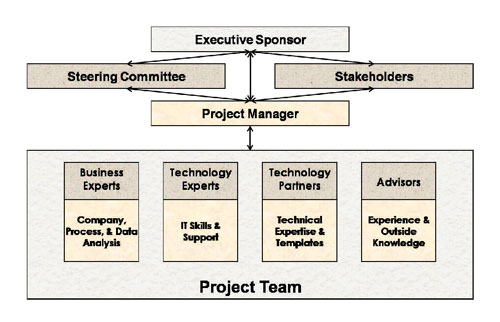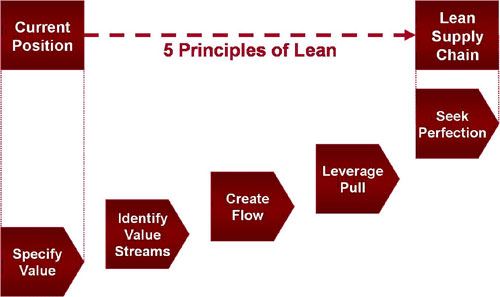I’ve just started reading another book on Lean and have gotten to the routine section where all authors stress the importance of leadership for any organization attempting a Lean transformation. And, as usual, I see no details on what is meant by Lean leadership. This lack of specifics in most Lean books has always puzzled me. I’ve seen many successful Lean initiatives and many that have not lived up to expectations. What is the difference between success and failure?
To guarantee success, we need to articulate those things that an executive must do so they are not doomed to failure. It’s not good enough to be a big talker or a half-hearted cheerleader; it takes someone willing and able to walk the talk and fulfill their role as the executive sponsor.
Leveraging what I have experienced and seen with successful Lean transformations, a number of specific elements appear to be associated with Lean leadership. I believe four specific elements zero in on what an executive sponsor must do to provide Lean leadership.
These four elements are:
- Organize for Success: Get the right people on the bus. Every Lean initiative should have a qualified project manager supported by a cross functional team, a steering committee, and all affected stakeholders. The executive sponsor is the only one that can effectively pull together the right people and get their commitment for the role they need to perform. Anything worthwhile should have active participation from the suppliers and customers of the process that is being improved.

- Promote Education: Get everyone on the same page and using the same cookbook. While there is flexibility in defining a strategy for creating a Lean supply chain, an organization must follow the five principles of Lean, focus on the elimination of waste, and define organizational standards for common activities such as value stream mapping. The executive sponsor should get educated on Lean leadership and begin changing the conversation to defining value, eliminating waste, employee empowerment, and other Lean concepts. The project manager must obtain extensive training on using Lean tools, managing a Lean project, and then develop an education plan for everyone in the organization.

- Demonstrate Support: Remove roadblocks and show you care. A good project manager will bring obstacles to an executive sponsor and will also bring the solution. As they say in Maine - let’s get the moose on the table; with Lean transformations, most obstacles are people who don’t want to change. The executive sponsor can keep a project moving and avoid future catastrophe by clearing small obstacles early and quickly.
Many times, clearing these obstacles will involve a short and precise telephone call to someone not yet with the program. This conversation does not need to be a big, confrontational meeting. Another means to demonstrate support is to be visible and engaged with all employees working on Lean improvement activities. An executive sponsor should attend some of the training courses and many presentations from kaizen blitz events. One example of Lean leadership is an executive who attended training for warehouse personnel on the 5S System and then committed to implement the concepts to clean up and organize her own office.
- Track Accomplishments: Leverage that steering committee and standard methodology. The standard methodology used for managing your Lean transformation will provide ideal points for updating the steering committee. The executive sponsor must own the schedule of steering committee meetings and set expectations with the project manager on the accomplishments to be discussed at each meeting. One standard methodology recommends the following steering committee meetings for a targeted Lean project:
- Confirmation of the Business Case: The steering committee approves the overall scope of the project after discussion of the benefits, costs, and other relevant information. The executive sponsor must invest time in the details of the business case, paying close attention to the scope of the project. An effective outline for the business case is:
- Current Situation
- Trends and Best Practices
- Statement of Need
- Scope
- Benefits and Objectives
- Costs and Resources
- Justification
- Organize for Success
- Define Value: The project team presents the information obtained from the customers of a value stream or a segment of value stream. For a complete value stream, external customers will have provided their feedback on what they value in your products and/or services. When the scope is the segment of a value stream, the feedback will generally be from internal customers. The executive sponsor must ensure that external or internal customers have been contacted and that the correct conclusions have been drawn from their responses.
- Current State Value Stream Map: The project team will present the current state value stream map and identify the waste they have found. There may also be a number of quick wins that have been implemented. It is very important for the steering committee to see the actual map and understand where the opportunities exist. The executive sponsor must look closely at the current state value stream map and agree that it covers the scope of the project and that it provides the level of detail required to identify waste.
- Future State Value Stream Map: The project team will present a proposal for the future state value stream map, where much of the waste has been eliminated and a number of new best practices are adopted. It is very important for the steering committee to see the actual map and understand how the future state will be an improvement from the current state. As with the prior meeting, there should be a number of quick wins that have been identified and implemented. The executive sponsor must evaluate the proposed future state map and ensure that best practices have been incorporated into the design.
- Implementation Plan for Future State: The project team lays out a plan that will create flow, leverage pull, and then stabilize the value stream in a mode of continuous improvement. This will also include a discussion of costs. The executive sponsor must ensure that the implementation plan is balanced in terms of technology, people, processes, customers, and suppliers; it should have milestones and deliverables that will help in tracking progress.
- Implementation: Depending on the scope of the improvement, there may be multiple updates to the steering committee as the future state is implemented. The executive sponsor must remain engaged during the implementation and keep the steering committee active as each major milestone is achieved. At some point, the performance measurement system will require adjustment and the executive sponsor will need to craft a strategy to address this area, which is typically out of scope for the Lean project at hand.
To summarize, the elements of Lean leadership are to acknowledge that the executive sponsor must do the things that the Lean project manager cannot do effectively. First, the executive sponsor must put together the infrastructure of a project team and steering committee. This ensures that the right people are engaged and the executive sponsor stands ready to make that short telephone call required to get someone with the program. Second, the executive sponsor must walk the talk by supporting education for everyone in the organization, taking an intense interest in the progress of kaizen blitz events, and helping the project team meet the deliverables outlined above in the schedule of steering committee meetings.
We define Lean as the systematic elimination of waste. While leadership involves soft skills that successful executives develop during their careers, I believe that Lean leadership requires us to leverage the “systematic” component of our Lean definition.
Lean leadership is the systematic application of executive sponsorship techniques as outlined in this article:
- Organize for Success
- Promote Education
- Demonstrate Support
- Track Accomplishments
Doing the above four elements will lead to success in crafting a Lean supply chain.
I wish you well on your Lean journey.
|